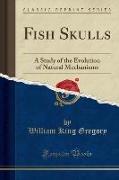Propaganda
BücherAngebote / Angebote:
2024 Reprint of the 1928 Edition. Propaganda, an influential book written by Bernays in 1928, incorporated the literature from social science and psychological manipulation into an examination of the techniques of public communication. Bernays wrote the book in response to the success of some of his earlier works such as Crystallizing Public Opinion (1923) and A Public Relations Counsel (1927). Propaganda explored the psychology behind manipulating masses and the ability to use symbolic action and propaganda to influence politics, consumer choices and corporate image, which we now call "branding". Walter Lippmann was Bernays' unacknowledged American mentor and his work The Phantom Public greatly influenced the ideas expressed in Propaganda a year later. The work propelled Bernays into media historians' view of him as the "father of public relations."
Bernay's manual of mass manipulation provides a detailed examination of how public discourse and opinion are shaped and controlled in politics, business, art, education, and science. In a world dominated by political spin and media manipulation, Propaganda is an essential read for all who wish to understand how power is used by the ruling elite of our society.
The nephew of Sigmund Freud, Edward Bernays (1891-1995) pioneered the scientific technique of shaping and manipulating public opinion, which he called "engineering of consent.'" During World War I, he was an integral part--along with Walter Lippmann--of the U.S. Committee on Public Information (CPI), a powerful propaganda machine that advertised and sold the war to the American people as one that would "Make the World Safe for Democracy." The marketing strategies for all future wars would be based on the CPI model. Over the next half century, Bernays, combining the techniques he had learned in the CPI with the ideas of Lippmann and Freud, fashioned a career as an outspoken proponent of the engineering of consent for political and corporate influence of the population, earning the moniker "father of public relations." Among his powerful clients were President Calvin Coolidge, Procter & Gamble, CBS, the American Tobacco Company, and General Electric, and the United Fruit Company.
Folgt in ca. 10 Arbeitstagen




